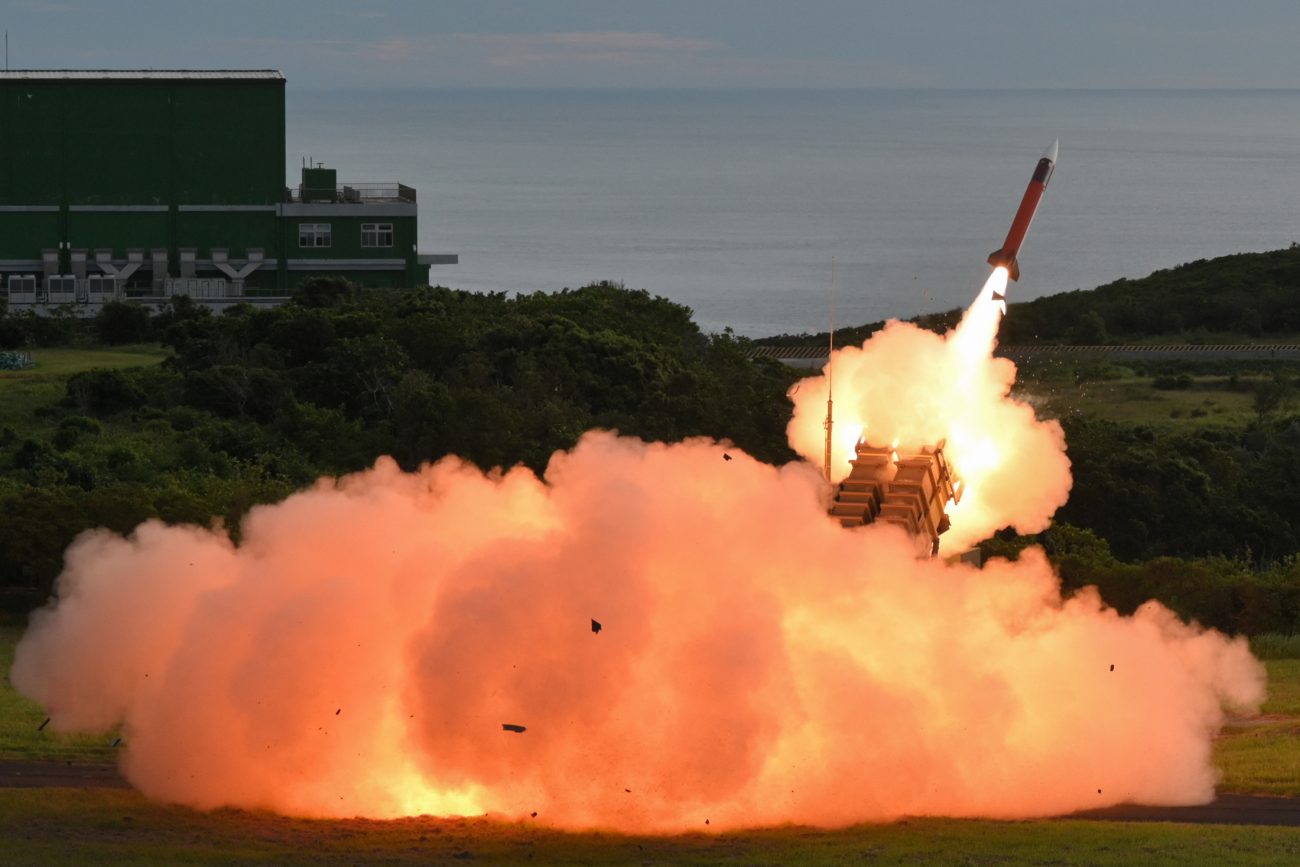Ukraine’s President Volodymyr Zelenskyy said that Germany would pay for two of the patriot AD systems, while Norway has agreed to supply one.
US President Donald Trump said on Friday that Washington will send weapons, including Patriot air defence systems, to Ukraine via NATO.
“We’re going to be sending Patriots to NATO and then NATO will distribute that,” Trump told US TV channel CBS News, adding that the alliance would pay for the systems.
Earlier, on July 1, Politico reported that the Pentagon had halted shipments of key air defense systems and precision-guided munitions to Ukraine, including the highly sought-after Patriot missile interceptors.
The move, triggered by concerns over depleted US stockpiles, comes at a precarious moment for Ukraine, which is facing intensified Russian missile and drone attacks targeting cities and infrastructure.
Just days later, The Guardian revealed that US Patriot interceptor stockpiles had dropped to only about 25% of what the Pentagon considers necessary to fulfill its military planning requirements.
An internal Pentagon review conducted on July 1 reportedly confirmed the shortage, attributing much of the drawdown to recent operations in the Middle East, including the interception of Iranian missile attacks on Al Udeid Air Base in Qatar.
According to officials familiar with the Pentagon’s logistics data, the US munitions tracker flagged Patriot inventories as falling below acceptable thresholds for combat readiness. Military planners warned that further transfers to Ukraine could compromise the US defense posture, particularly in the Indo-Pacific and the Middle East.
Mixed Signals From Washington
Despite the reported shortfall, the Pentagon quickly countered the narrative. Lt. Col. Bryon McGarry emphasized that US forces remain fully equipped and globally postured to respond to any threat.
“We’re not going to discuss specific stockpile numbers,” he said, “but our forces remain fully ready… and ongoing assessments of our capabilities are routine and reflect responsible planning, not shortfall.”
This statement was released the same day as The Guardian’s report, underscoring internal divisions or at least confusion over the readiness and availability of strategic munitions. The conflicting accounts have left US partners and Ukrainian officials uncertain about the consistency and reliability of American support.

Trump Steps Into The Vacuum
Amid the uncertainty, President Donald Trump broke his silence. On July 8, Trump had pledged to send 10 Patriot interceptors to Ukraine and voiced sharp criticism of Russia’s invasion.
In a separate conversation with President Volodymyr Zelensky, The Wall Street Journal reported that Trump claimed he was not behind the decision to halt weapons shipments.
While 10 interceptors represent only a fraction of Ukraine’s requirements, the gesture was notable for its timing. It came just as Russia was intensifying its aerial campaign and as Kyiv faced growing delays in acquiring additional defense systems.
Trump also stated that the war “would not have happened under my presidency” and called the conflict “a terrible, terrible war,” suggesting a willingness to reposition himself on Ukraine policy amid domestic political shifts.
Understanding The Patriot System
At the center of this debate is the MIM-104 Patriot missile system—short for Phased Array Tracking Radar to Intercept on Target. Developed by Raytheon and Lockheed Martin, the Patriot is the only US-made air defense platform capable of intercepting high-speed tactical ballistic missiles, stealthy cruise missiles, and advanced aircraft.
Using track-via-missile (TVM) guidance, the system allows for midcourse corrections from a mobile control center, enhancing its interception accuracy.
The Patriot has an effective range of 70 kilometers and can engage targets flying at altitudes exceeding 24 kilometers. With response times as short as nine seconds, it is one of the most agile and capable systems in modern air defense.
Global deployment underscores its strategic value. Patriot systems are currently in service with more than a dozen countries, including Germany, Japan, South Korea, Saudi Arabia, Poland, and Taiwan, making it a cornerstone of NATO and US allied defenses.
To counter emerging threats, Raytheon has developed an upgraded version, the GEM-T (Guidance Enhanced Missile – Tactical), which improves performance against low radar cross-section targets such as modern cruise missiles. The GEM-T is now widely deployed and features in new international contracts.
In April 2023, Switzerland signed a $1.2 billion deal to acquire five Patriot fire units and GEM-T missiles. Just months later, in January 2024, NATO’s Support and Procurement Agency awarded a $5.6 billion contract to COMLOG—a Raytheon and MBDA joint venture—to supply up to 1,000 GEM-T interceptors under the European Sky Shield Initiative, benefiting countries like Germany, Romania, and Spain.
Ukraine’s Reliance On The Patriot
Since receiving its first Patriot batteries from the United States via Germany in April 2023, Ukraine has come to rely heavily on the system. It is currently the only Western-supplied air defense system capable of consistently intercepting Russia’s most sophisticated missiles.
Washington has since delivered at least three Patriot batteries and an undisclosed number of interceptors. These systems have proven essential in defending major Ukrainian cities, military command centers, and critical infrastructure from Russian aerial strikes.
However, Ukraine’s access to additional Patriot systems remains limited. The US produces roughly 600 interceptors per year—a figure insufficient to cover American military needs, global deployments, and Ukrainian requirements simultaneously.
In one recent instance, nearly 30 Patriot interceptors were reportedly used to defend a US base in Qatar from Iranian missile strikes, illustrating just how quickly the stockpile can be depleted under operational stress.
A Quiet Transfer From Israel?
Although the US remains Ukraine’s primary source of Patriots, Israel has emerged as a less visible but potentially important contributor.
In a June 8 interview, Israel’s ambassador to Ukraine, Michael Brodsky, stated that Israel had transferred older Patriot systems—originally deployed in the 1990s—to Ukraine after retiring them in 2024. He described it as a practical handover of aging but still operational units.
However, this statement was swiftly contradicted. Israel’s Foreign Ministry issued a denial, saying that no Patriot systems had been transferred. Notably, the denial made no mention of missiles, leading to speculation that Israel may have provided interceptors rather than launchers.
Axios later reported that 90 Patriot interceptors had been transferred from Israel to Poland in early 2024, en route to Ukraine.
The New York Times also reported in May that a refurbished Israeli Patriot system was expected to be delivered to Ukraine. Whether officially acknowledged or not, Israel’s decommissioned systems appear to be entering Ukrainian service, bolstering defenses just as US supplies become uncertain.
Disruptions To Ukraine’s Arms Supply Chain
The freeze in US weapons transfers has impacted both of Ukraine’s key delivery channels: Pentagon drawdowns from existing stocks and the Ukraine Security Assistance Initiative (USAI), which funds the procurement of new weapons from US defense contractors.
While drawdowns are relatively fast, USAI-funded shipments often take months—or even years—to materialize due to production backlogs and prioritization of US military orders.
That reality leaves Ukraine in a precarious position. With Russia increasing its use of ballistic and cruise missiles, Kyiv faces escalating demand for interceptors and radar systems.
Western-supplied platforms, especially the Patriot, have become vital to protecting cities and command infrastructure. Without timely resupply, the effectiveness of Ukraine’s air defense network could rapidly decline.
The halted aid package, originally scheduled for delivery in early July, reportedly included dozens of Patriot interceptors, along with Hellfire missiles, GMLRS rockets, Sparrows, and anti-tank systems—all essential for countering Russia’s aerial and ground offensives.
A Disputed Decision At The Top?
Complicating matters further, NBC News reported on July 4 that US Defense Secretary Pete Hegseth personally ordered the weapons shipment paused, despite internal military assessments concluding that the delivery would not undermine US readiness.
While some stockpiles were acknowledged to be low, none had dropped below critical operational thresholds, according to the Pentagon’s own analysis.
The decision has raised questions about whether political, rather than purely logistical, considerations influenced the pause.
As the debate continues, Trump’s pledge to send 10 Patriot interceptors—though modest—signals that American military aid remains a live political issue. For Ukraine, however, symbolic gestures offer little comfort as it faces the tangible threat of renewed and intensified Russian strikes.
As Russia intensifies its air war and Ukraine’s missile defense needs reach a peak, Washington finds itself at a crossroads.
If Patriot stockpiles are as secure as the Pentagon insists, the rationale for withholding them appears increasingly difficult to justify. If, however, reserves are indeed strained, the U.S. must choose between short-term allied support and long-term force planning.
The debate over Patriot missiles is no longer just about hardware—it has become a test of political will, strategic priority, and global deterrence.
- Shubhangi Palve is a defense and aerospace journalist. Before joining the EurAsian Times, she worked for ET Prime. She has over 15 years of extensive experience in the media industry, spanning print, electronic, and online domains.
- Contact the author at shubhapalve (at) gmail.com




